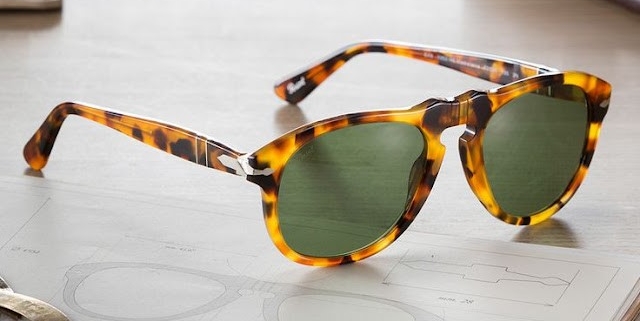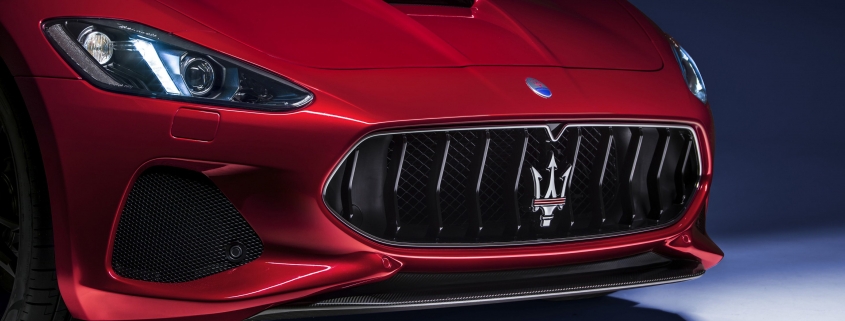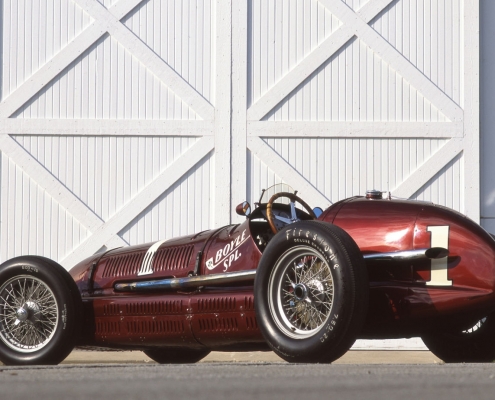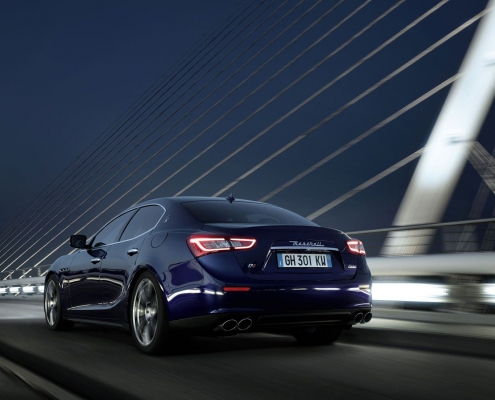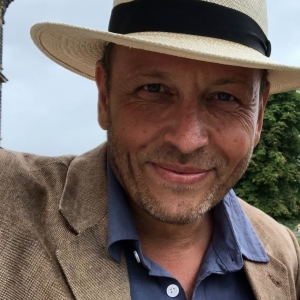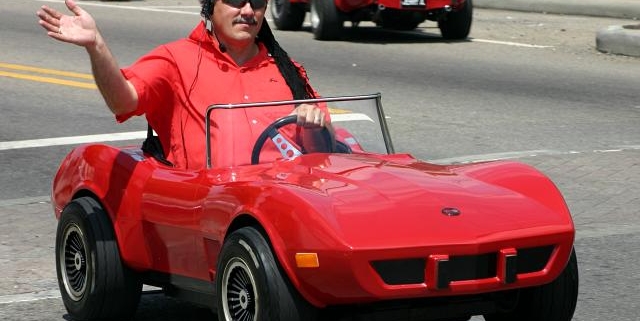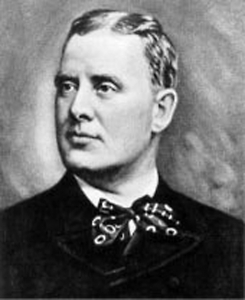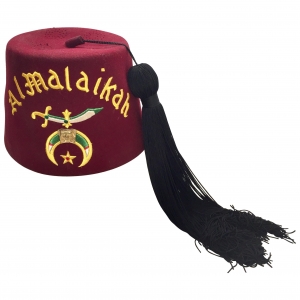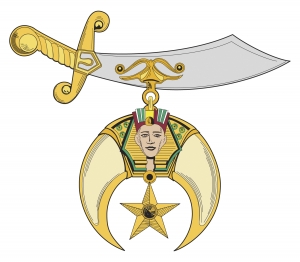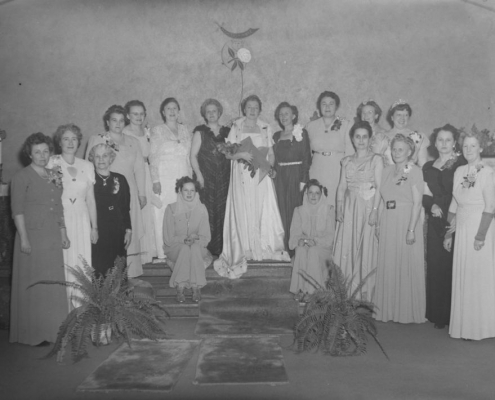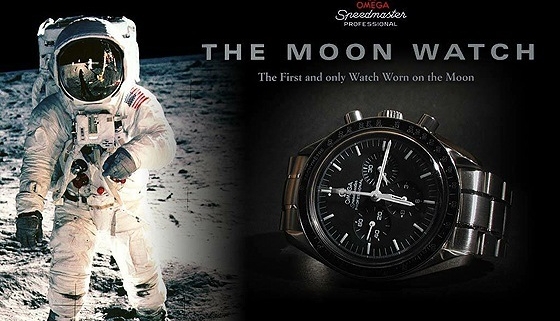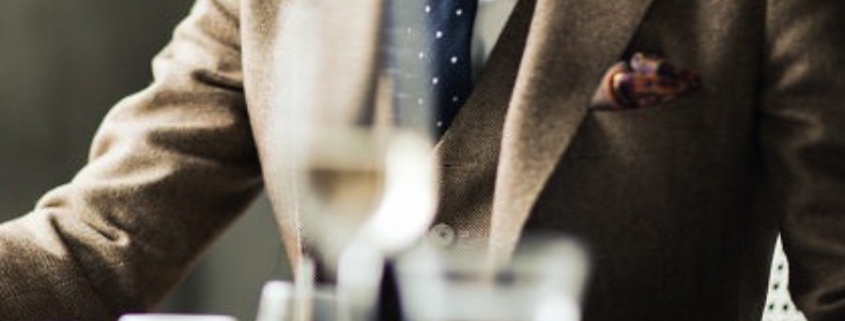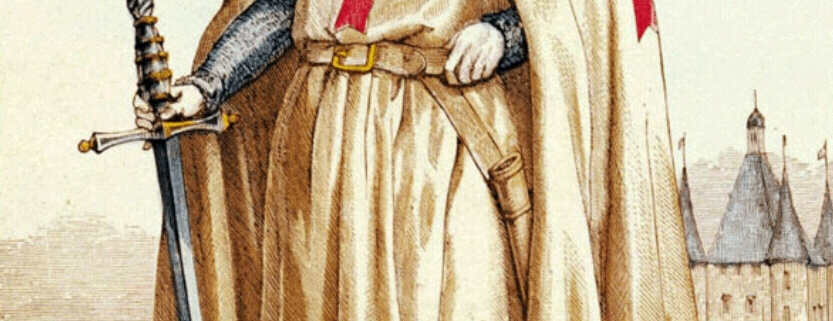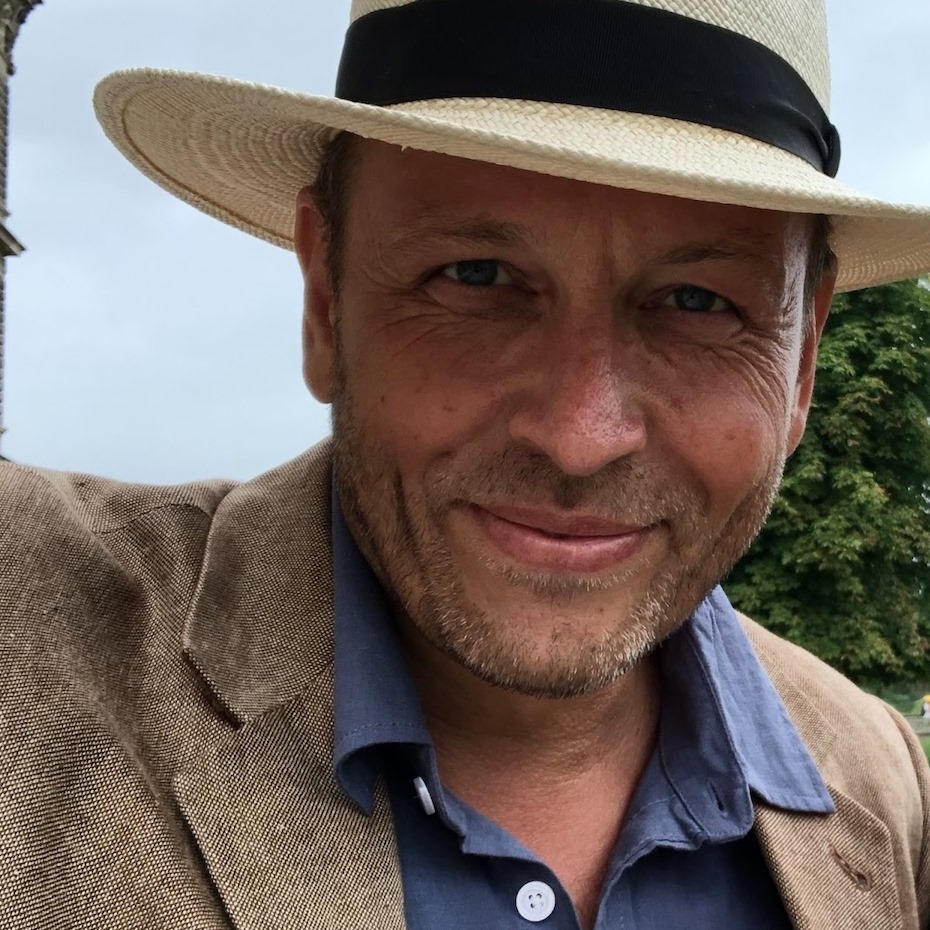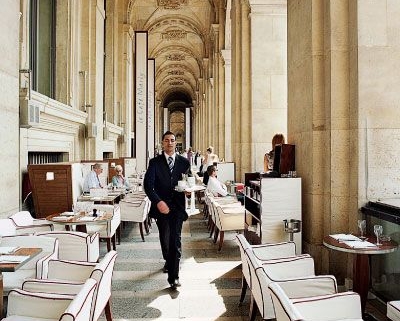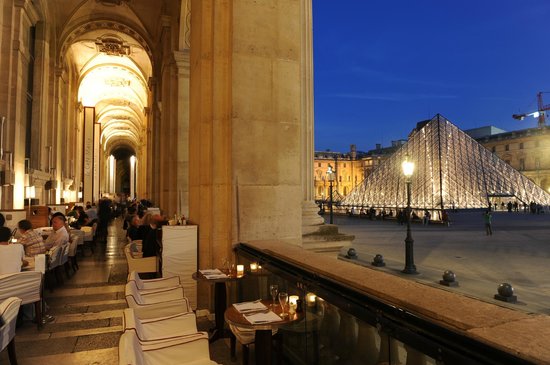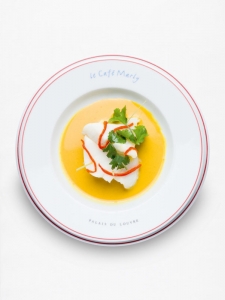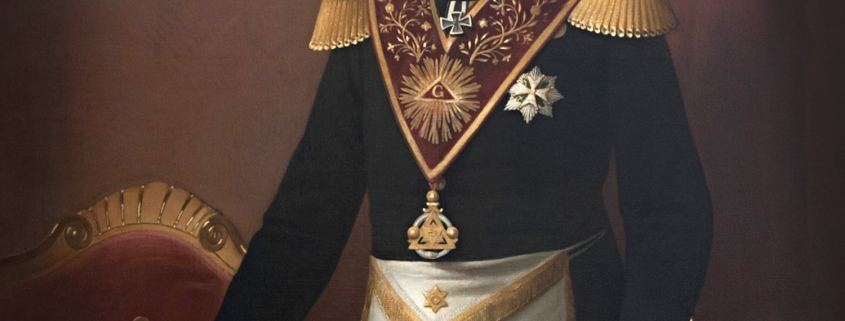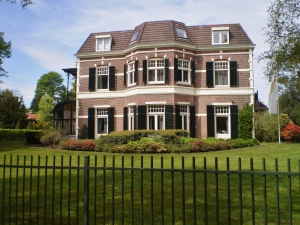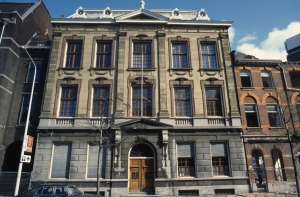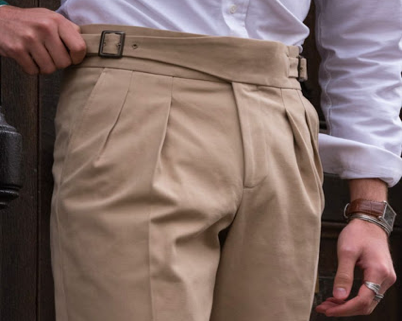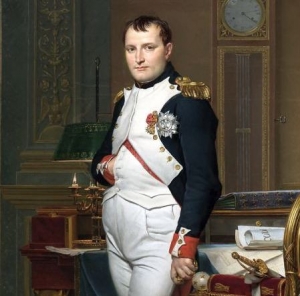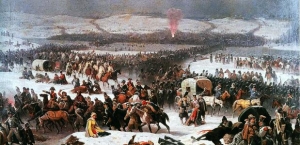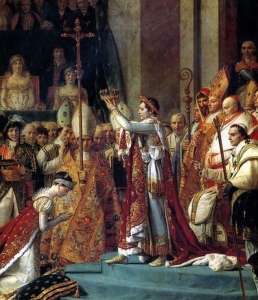Messages
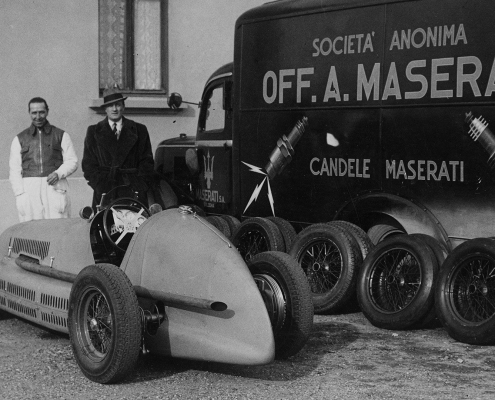 As the slogan says, Maserati means "luxury, sport and style poured into exclusive cars". Maserati combines Italian class with world-class luxury.
As the slogan says, Maserati means "luxury, sport and style poured into exclusive cars". Maserati combines Italian class with world-class luxury.
The Maserati story begins with a railway worker named Rodolfo Maserati, his wife Carolina Losi and their seven children. The Maserati brand was founded in 1914 in Bologna by the six Maserati brothers: Carlo, Bindo, Alfieri, Mario, Ettore and Ernesto. It initially manufactured spark plugs and ignition coils. In 1926, the first self-built racing car (Tipo 26) was presented at the Targa Florio, driven by Alfieri Maserati, who promptly won. After that, he also won numerous races. From then until the 1950s, the company concentrated on building racing cars, the most famous types being the 250 F and the "Birdcage", which were extremely successful.
At the end of the 1950s, it was realised that the factory could not make a living out of racing, and it was decided to start building street cars as well. The first type to be produced in quite a large series (almost 2000 units) was the 3500 GTS from 1957. During the sixties and seventies, the marque built a reputation for producing exclusive GTs with sounding names such as the Mexico, Ghibli, Indy, Bora, Merak, Khamsin, Kyalami and Quattroporte, all of which were fast touring cars produced in small numbers. In 1968 Citroën took over Maserati, which led to the cars in which Citroën's hydraulic technology could be found.
In the mid-1970s, the factory was on the brink of collapse when Citroën wanted to pull the plug on the loss-making business. De Tomaso took over the business in 1975 for a symbolic sum. He decided that the only way to survive was to develop a car that was accessible to a larger public. Thus, in 1982, the Biturbo was presented, which struck like a bomb. By equipping a relatively small engine with two turbos, a very fast car was presented that could easily take on the BMW 323i, its biggest rival.
After that, the model was constantly improved. The last incarnation of the biturbo was the Ghibli II. Then the factory was placed under the management of Ferrari and the company was totally reorganised and rebuilt. The first model under the new regime was the 3200 GT, which still had an 8 cylinder biturbo engine. After that, the company switched to conventional engines without turbochargers, which can be found in the current models. Recently, Maserati was added to Alfa Romeo within the Fiat group, and was therefore taken away from Ferrari.
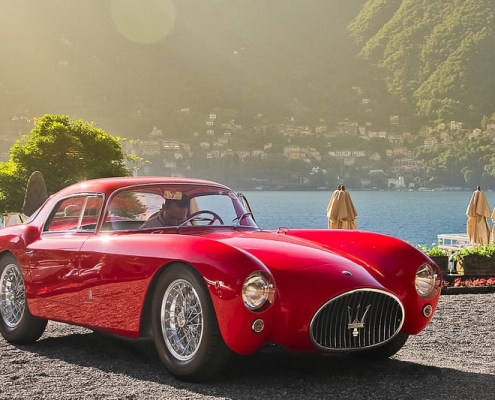 In 2015, 31,500 vehicles of the brand were sold. About 40% of sales take place in the United States and the second market is the People's Republic of China where just over a fifth of sales were made. The current headquarters is in Modena, Italy, where unique Maserati models are produced every year.
In 2015, 31,500 vehicles of the brand were sold. About 40% of sales take place in the United States and the second market is the People's Republic of China where just over a fifth of sales were made. The current headquarters is in Modena, Italy, where unique Maserati models are produced every year.
The idea behind Maserati production is gracefully simple; Maserati is the product of family traditions and reflects the passion of three brothers for fine cars and racing. As a result, Maserati has become a synonym for fast, stylish, sporty vehicles and the spirited lifestyle that goes with them. Maserati is the favourite brand of athletes, celebrities, singers and lovers of luxury style from all over the world.
Maserati cars are super-powerful because of their 16-cylinder engines, which not only results in a fast engine, but also makes the car a great competitor to other sporty brands such as Mercedes, Ferrari and even McLaren. The latest development, the Maserati Alfieri concept car, is named after its legendary founder.
The history behind the brand
The Maserati logo was designed by Mario, one of the Maserati sons, who put time and effort into making it a unique symbol. The Maserati logo is intended to represent the ideas with which the luxury car dealer is associated: power, style, luxury and resilience. The Maserati symbol, which mimics the beautiful (and famous) fountain of Neptune in Piazza Maggiore in Bologna, is now ubiquitous around the world as a synonym for luxury and class in the automotive industry. Neptune is considered the Greek god of the sea and also a "god of horses". The symbolic logo is also intended to provide insight into the "what's all about" theme of the Maserati.
What the Maserati brothers have in common is a common passion for racing.
They eventually created their own model that graced the catwalks, competing with major existing brands and winning car races around the world. Eventually, the brothers decided to cancel their participation in car races.
Maserati's headquarters, meanwhile, moved from picturesque Bologna to the more industrial Modena, also historically known as a producer of sporty and stylish Italian cars, and one of the centres of Italy's booming car industry.
The production history of Maserati has not been smooth over the years. It stopped during the Second World War. A tragic accident in the 1950s also affected the fate of the Maserati. The accident involved a sporty Ferrari car that flew into the crowd due to a loss of control by the driver and caused several deaths among the car racing observers. After the tragic accident, Maserati decided to cancel its participation in motor races.
Maserati was the favourite choice of many celebrities, such as the Shah of Persia Reza Rahlavi who requested the integration of a sports engine into the chassis of the original Maserati 3500 GT.
The final result was the beautiful Maserati 5000 GT, with only 33 such models available to a few very select owners.
More than a century of battling earth, brick, concrete and more helped Maserati stake a claim in the history of racing. The Trident that graces Maserati cars far and wide was the brainchild of Mario Maserati. He was the only Maserati brother without any interest in cars. Instead, he preferred life as an artist, so his brothers gave him the commission. Ironically, Mario's artwork became one of the most recognised symbols of the Maserati brand.
In 1922, 10 years before his untimely death, Alfieri took his redesigned Diatto to the Susa-Moncenisio race. He reached speeds of 69 km/h and scored a major victory. Shortly afterwards, he scored another victory in the Aosta-Gran San Bernardo race.
The brothers completed their first car in 1926 and set a new world record in Class C in 1929 when Baconin Borzacchini's 16-cylinder V4 drove almost 245 km/h. It was a record that lasted until 1937.
Wilbur Shaw took over the wheel of the "Boyle Special" 8 CTF and won the Indianapolis 500 in 1939 with an average speed of just over 345 km/h. A year later, in 1940, he repeated his title.
Maserati participated in Formula 1 races in the 1940s, 1950s and 1960s and scored 9 Grand Prix victories for his factory team.
Maserati-Ferrari rivalry.
Modena is known as the city of supercars and interestingly enough, both Maserati and Ferrari are currently based here. Back in the day, the rivalry between Maserati and Ferrari started when Maserati moved from Bologna to Modena. There was fierce competition between these two car manufacturers, which spread from the factories to the race track and even to local entertainment venues and workers' homes. People who worked at Maserati and Ferrari never saw each other, and this rivalry reached its peak in 1978 when Enzo Ferrari refused to welcome the then President of Italy Sandro Pertini to his factory on a tour of Modena. The simple reason for this was that Pertini drove a Maserati! Nevertheless, there is currently no real rivalry between the two companies, as they are both owned by the Fiat Group.
Maserati as a celebrity choice
Among the exclusive list of Maserati owners is the famous talk show host Jay Leno, who has included a light blue lacquered Maserati model from 1962 in his intriguing collection of luxury car models.
Other celebrities who drive a Maserati model are Bradley Cooper with his Grand Turismo Maserati and Gwyneth Paltrow, with her Maserati Quattro Porte.
Maserati is one of the most important symbols of modern motor racing. It is a status symbol, a power symbol and an indicator of spirited life at the same time.
Maserati was once known as the Gangster's Car, one of the car possessions of the Soprano's underground characters, Johnny Sacrimoni and Christopher Moltisanti, and it is also used in well-known films with a 'gangster' theme, such as Scarface, which features the Miami, and Godfather III.
Maserati does not want its history to be associated with the tastes of dictators, but it is interesting to note that one of its fans is Benito Mussolini, who wanted his own V16 city car to be produced long before Hitler received his Ferry Porsche. However, the plan did not come to fruition. What makes Maserati a unique brand is its rich history. With ups and downs, the brand has found its way into the world of luxury and become a favourite among film producers, Hollywood figures and politicians around the world. The Maserati image of luxury has been consolidated with the elegant luxury theme behind it, the high price tags, the possibility of customisation and the aerodynamic design.
Owning a Maserati makes a person stand out, as the brand is a symbol of luxury tastes and also competes with other posh brands, such as Ferrari and Alfa Romeo.
Maserati has become a leader in the world of automobile fashion, with its uniquely elegant designs and distinctive lines. Initially the designs were very personal, round and circular, but over the years they have become longer and larger. Some Maserati models have outstanding vision, including the famous GranTurismo that impressed at the Geneva Motor Shaw in 2007.
With its world-class charm and incredible shape and design, Maserati has become a leader in the production of fine sports cars. It is competing with mainstream sports car brands and has established itself as one of the leaders in the competitive car market.
Thierry Stravers is co-owner of Masonic Store.
He likes to combine his passion for style and elegance with his Masonic activities.
Thierry is the owner of Trenicaa marketing agency and is a board member of Loge Enlightenment No.313 O: Hoofddorp.
The Shriners, aka The Ancient Arabic Order of the Nobles of the Mystic Shrine.
In 1870, a group of Freemasons met regularly for lunch at the Knickerbocker Cottage on Sixth Avenue in New York City. At a special table on the second floor, a particularly cheerful group of men met regularly. Among the regulars were Walter M. Fleming, M.D., and William J. "Billy" Florence, an actor. The group often talked about starting a new Masonic fraternity - one that focused on fun and fellowship, rather than ritual. Fleming and Florence took this idea seriously enough to do something about it.
Knickerbocker Cottage on Sixth Avenue in Manhattan
Billy Florence had been on tour in France and was invited to a party given by an Arab diplomat. The exotic style, flavours and music of the Arab-themed party inspired him to propose this as the theme for the new fraternity. Walter Fleming, a dedicated brother, built on Florence's ideas and used his knowledge of fraternal rituals to transform the Arabic theme into the Ancient Arabic Order of Nobles of the Mystic Sanctuary (A.A.O.N.M.S.). With the help of the regulars of Knickerbocker Cottage, Fleming drew up the ritual, designed the emblem and costumes, formulated an invocation and declared that members would wear the red fez.
William Jermyn Conlin (26 July 1831 - 19 November 1891) better known by his stage name William J. Florence, was an American actor, songwriter and playwright. He achieved national prominence with a forty-year career in which he excelled in playing the humorous and poetic Irish character.
Florence received ribbons for his œuvre from the French Societe Histoire Dramatique.
Florence was invited to a party given by an Arab diplomat during a tour in Marseille.
The entertainment was something in the nature of an elaborately staged musical comedy.
Afterwards, the guests became members of a secret society.
Florence made many notes and drawings on his first visit and on two other occasions, once in Algiers and once in Cairo.
When he returned to New York in 1870, he showed his material to Fleming.
Walter Millard Fleming (1838 - 1913) was a prominent physician and surgeon. He received a degree in medicine in Albany, New York, in 1862.
During the Civil War, he was a surgeon in the 13th New York Infantry Brigade, a militia unit of what would later be called the National Guard. He then practised medicine in Rochester, New York, until 1868, when he moved to New York City and became a prominent practitioner.
Fleming created the ritual, the emblem and the costumes. Florence and Fleming were initiated on 13 August 1870, and on 16 June 1871 they began with 11 other men. The group adopted a Middle Eastern theme and soon established Temples (although the term Temple is now generally replaced by Shrine Auditorium or Shrine Centre).
The first temple founded was the Mecca Temple (now known as Mecca Shriners), established on September 26, 1872 at the New York City Masonic Hall. Fleming was the first Potentate. Fleming is listed as member #1 in the 1904 Report of Mecca Temple, New York City.
The red fez with a black tassel, the official headgear of the shrine, has been handed down through the ages.
It takes its name from the place where it was first made - the holy city of Fez, Morocco.
The Fez became a symbol of the Ottoman Empire in the early 19th century.
In 1827, Mahmud II commissioned the Fez as a modern headdress for his new army, the Asakir-i Mansure-i Muhammediye.
The decision was inspired by the Ottoman naval command, which had earlier returned from the Maghreb and embraced the style. In 1829, Mahmud issued new regulations requiring the use of the Fez by all civil and religious officials.
It was intended to replace the turban, which acted as a marker of identity, dividing rather than uniting the population.
The fez was subsequently banned in Turkey in 1925 as part of Atatürk's reforms.
The Logo
The crescent was adopted as the jewel of the Order.
Although any material can be used to form the Crescent Moon, the most valuable are the claws of a royal Bengal tiger, united at their base in a gold setting. In the middle is the head of a sphinx and on the back a pyramid, an urn and a star. The jewel bears the motto, "Robur et Furor", which means "Strength and Fury". Today, the shrine's emblem includes a scimitar from which hangs the crescent moon, and a five-pointed star under the sphinx's head.
The emblem on the front of the fez, the half-moon and scimitar, is an important part of the brotherhood's theme and is representative of the characteristics embodied by the Shriners. The scimitar represents the backbone of the brotherhood, its members. The two claws represent the Shriners brotherhood and its philanthropy. The sphinx represents the governing body of the Shriners and the five-pointed star represents the thousands of children helped by the philanthropy each year.
The first meeting
On September 26, 1872, the first Shrine Temple in the United States was held in the New York City Masonic Hall. Brother McClenachan and Dr Fleming had completed the ritual and proposed that the first temple be called Mecca. The original 13 Masons of the Knickerbocker Cottage lunch group were called Charter Members of Mecca Temple (Mecca Shriners). Noble Florence read a letter outlining the 'history' of the Order and giving advice on holding meetings. The elected offices were Walter M Fleming, Potentate; Charles T. McClenachan, Head Rabban; John A Moore, Assistant Rabban; Edward Eddy, High Priest and Prophet; George W. Millar, Oriental Guide; James S. Chapel, Treasurer; William S. Paterson, Recorder; and Oswald M. d'Aubigne, Captain of the Guard.
But the organisation was not an immediate success, although in 1875 a second temple was chartered in Rochester. Four years after the sanctuary began, there were only 42 Shriners, all but six from New York.
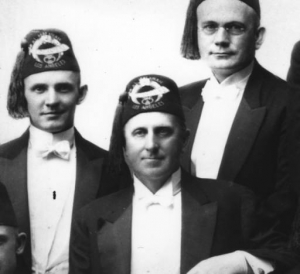 The Imperial Council, now Imperial Divan
The Imperial Council, now Imperial Divan
At a meeting of Mecca Shriners on 6 June 1876, in the New York Masonic Temple, a new body was crated to stimulate the growth of the young brotherhood. This governing body was called "The Imperial Grand Council of the Ancient Arabic Order of Nobles of the Mystic Shrine for the United States of America". Fleming became the first Imperial Grand Council and the new body established rules for membership and the formation of new temples. The initiation ritual was embellished, as was the mythology of the brotherhood. An extensive publicity and recruitment campaign was launched.
It worked. Just two years later, in 1878, there were 425 Shriners in 13 temples. Five of the temples were in New York, two in Ohio and the others in Vermont, Pennsylvania, Connecticut, Iowa, Michigan and Massachusetts.
The sanctuary continued to grow throughout the 1880s. By the time of the 1888 annual meeting (convention) in Toronto, there were 7,210 members in 48 temples across the United States and one in Canada. Although the organisation was still primarily social, philanthropic activities became increasingly common. During a yellow fever epidemic in 1888 in Jacksonville, Florida, members of the New Moro Shriners and Masonic Knights Templar worked long hours to relieve the suffering population. In 1889, Shriners came to the aid of the victims of the Johnstown Flood. In 1898, there were 50,000 Shriners and 71 as the 79 Temples engaged in a kind of philanthropic work.
By the turn of the century, the Shriners had come into their own. During the Imperial Coucil of 1890, representatives from 82 temples marched in a parade in Washington, DC, judged by President William McKinley. The number of Shriners was over 55,000. By 1938, there were approximately 340,000 members in the United States. That year, Life first published photographs of their rites. It described the Shriners as "among the secret lodges the number one in prestige, wealth and show," and stated that "in the typical city, especially in the Midwest, the Shriners will comprise most of the prominent citizens."
The present Order.
Shriners often take part in local parades, sometimes as rather elaborate units: miniature themed vehicles (all sports cars; all miniature 18-wheeler trucks; all fire engines, and so on), an "oriental band" dressed in cartoonish versions of Middle Eastern dress; pipe bands, drummers, motorbike units, Drum and Bugle Corps, and even traditional brass bands.
Membership
Until 2000, before being eligible for membership of the Shrine, a Mason had to complete either the Scottish Rite or the York Rite systems, but now any Master Mason can become a member.
In the past, Shriners have practised hazing rituals as part of initiating new members: in 1991, a potential Shriner sued the Oleika Shrine Temple of Lexington, Kentucky for injuries sustained during hazing, including being blindfolded and a shock of electricity applied to his bare bottom.
There are two organisations attached to the Shrine that are for women only: The Ladies' Oriental Shrine and the Daughters of the Nile. They both support the Shriners' shrines and promote sociability, and membership in both organisations is open to any woman aged 18 or over who is related by birth or marriage to a Shriner or Master Mason.
The Ladies Oriental Shrine of North America was founded in 1903 in Wheeling, West Virginia,[10] and the Daughters of the Nile was founded in 1913 in Seattle, Washington.
The latter organisation has local chapters called "Temples", and there were ten in 1922.
Among the famous members of the Daughters of the Nile was First Lady Florence Harding, wife of Warren G. Harding.
Architecture
Some of the earliest temples often chose a Moorish revival style for their temples. Architecturally notable Shriners temples include: the Shrine Auditorium in Los Angeles; the former Mecca Temple, now called New York City Center and used primarily as a concert hall; Newark Symphony Hall; the Landmark Theatre (formerly The Mosque) in Richmond, Virginia; the Tripoli Shrine Temple in Milwaukee, Wisconsin; the Polly Rosenbaum Building (formerly the El Zaribah Shrine Auditorium) in Phoenix; the Helena Civic Centre (Montana) (formerly the Algeria Shrine Temple); Abou Ben Adhem Mosque in Springfield, Missouri; Murat Shrine Temple (now Old National Center) in Indianapolis; the Fox Theatre (Atlanta, Georgia) which was jointly built by the Atlanta Shriners and film magnate William Fox; and the Syria Mosque, Pittsburgh, Pennsylvania.
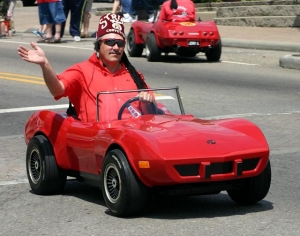 A Pittsburgh Shriner in an iconic miniature car participating in a Memorial Day parade.
A Pittsburgh Shriner in an iconic miniature car participating in a Memorial Day parade.
Most temples support various parade units. These units are responsible for promoting a positive Shriner image to the public by participating in local parades.
The parade units often include miniature cars powered by lawn-mower engines.
There is no great history or ritual behind it. It is pure entertainment for the children.
To stand out in parades, the Shriners started wearing elaborate costumes and driving small cars designed more for tricks than speed. Car and Driver magazine even examined the cars to see what it was all about. These "modern go-karts" cost about $1,600 each.
The Shriners are so secretive about where the cars were made that the author of the article could only discover that they were built somewhere in Illinois.
Shriners in St. Louis have several parade engine units, including miniature cars modelled after 1932 Ford coupes and 1970s Jeep CJ models, and a unit of Indianapolis-style miniature race cars. Some of these are equipped with powerful alcohol-powered engines. The drivers' skills are demonstrated in parades with fast spinouts.
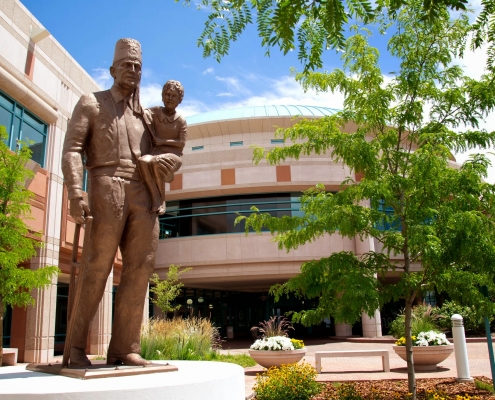 Shriners Hospitals for Children
Shriners Hospitals for Children
Shriners Hospitals Shriners Hospitals for Children is a network of 22 non-profit medical facilities across North America. Children with orthopaedic conditions, burns, spinal cord injuries and cleft lip and palate are eligible for care and receive all services in a family-oriented setting, regardless of the patient's ability to pay. Care for children is usually provided until the age of 18, although in some cases it can be extended to the age of 21.
In 1920, the Imperial Session of the Shriners was held in Portland, Oregon. At that session, the members unanimously adopted a resolution introduced by W. Freeland Kendrick, who (while serving as Imperial Governor) put forward the resolution that established the Shriners Hospitals for Children. The first hospital in the system opened in 1922 in Shreveport, Louisiana. It provided pediatric orthopaedic care. Shriners Hospitals for Children worked closely with the United States Southern Command and other military commands, including the Army and Air Force, the Guatemalan Combined Forces, and through the US Embassy, the US Department of Health and Human Services and the US State Department to arrange medical visas and transportation to the United States, "with a global commitment to children around the world".
In 1962, the Shriners of North America gave $10 million to establish three hospitals specialising in the treatment and rehabilitation of burnt children. After visiting 21 university medical institutions, the decision was made to build their first paediatric burn hospital on the campus of the University of Texas Medical Branch in Galveston, Texas.
In 1994, the Chronicle of Philanthropy, an industry publication, published the results of the largest survey of the popularity and credibility of charities and non-profit organisations. The study found that Shriners Hospitals was ranked as the 9th "most popular charity/non-profit in America" of more than 100 charities surveyed, with 40% of Americans over the age of 12 choosing "Love" and "Like A Lot" for Shriners Hospitals.
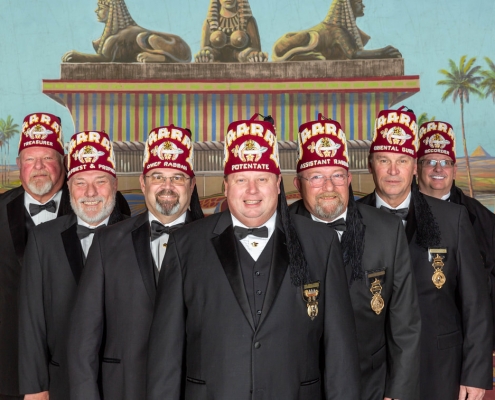 In September 2008, Shriners Hospital in Galveston suffered significant damage from Hurricane Ike. The hospital was closed for renovations at the time and other Shriners Hospitals for Children were providing care to children with acute burns. The Shriners had considered closing facilities in Shreveport, Louisiana; Greenville, South Carolina; Erie, Pennsylvania; Spokane, Washington; Springfield, Massachusetts and Galveston, Texas, eliminating a total of 225 beds. However, in July 2009, the Shriners National Convention voted overwhelmingly against closing hospitals and repairing and reopening the Galveston facility.
In September 2008, Shriners Hospital in Galveston suffered significant damage from Hurricane Ike. The hospital was closed for renovations at the time and other Shriners Hospitals for Children were providing care to children with acute burns. The Shriners had considered closing facilities in Shreveport, Louisiana; Greenville, South Carolina; Erie, Pennsylvania; Spokane, Washington; Springfield, Massachusetts and Galveston, Texas, eliminating a total of 225 beds. However, in July 2009, the Shriners National Convention voted overwhelmingly against closing hospitals and repairing and reopening the Galveston facility.
In 2009, Douglas Maxwell, the hospitals' CEO, said he and other Shriners are confident that the hospital system will remain solvent in 2009, despite an endowment that dropped from $8 billion to $5 billion in less than a year because of the poor economy. long-term. Maxwell stated in July 2009 that some of the facilities may become outpatient surgery centres and will start accepting insurance payments (for most care) for the first time in the 87-year history of the hospitals. Maxwell said that children suffering from burns, orthopaedic conditions, spinal cord injuries and cleft palates will be treated at no cost to their families.
In May 2015, Shriners Hospitals for Children became a member of the Mayo Clinic Care Network, a national network of organisations committed to improving services for patients and their families through physician collaboration.
More information about The Shriners can be found here: www.shrinersinternational.org
More information about The Shriners Hospitals can be found here: www.shrinershospitalsforchildren.org
Thierry Stravers is co-owner of Masonic Store.
He likes to combine his passion for style and elegance with his Masonic activities.
Thierry is the owner of Trenicaa marketing agency and is a board member of Loge Enlightenment No.313 O: Hoofddorp.
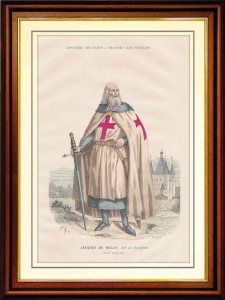 To really discover the legend of the origins of the Templars, we have to go back almost 3,000 years in history. King David was the second king of Israel. He was a warrior king who had united the two kingdoms of Judah and Israel and defeated the Philistines. King David had gathered the materials needed to build an amazing temple, but as a punishment from God, because of the blood he had shed, he was not allowed to build it himself. The temple was to be built on Mount Moriah, the holy ground where God had commanded Abraham to kill his son Issac, before he gave in at the last moment. King David was succeeded by his son Solomon who completed his father's plan and over the course of nearly 8 years from 964 to 956 B.C. he oversaw the building of the Temple. After completion, the Temple remained unused for 13 years while the rest of the citadel and the royal palace were completed, but in 934 BC the Ark of the Covenant was placed in it and a great feast, the Feast of Tabernacles, was held.
To really discover the legend of the origins of the Templars, we have to go back almost 3,000 years in history. King David was the second king of Israel. He was a warrior king who had united the two kingdoms of Judah and Israel and defeated the Philistines. King David had gathered the materials needed to build an amazing temple, but as a punishment from God, because of the blood he had shed, he was not allowed to build it himself. The temple was to be built on Mount Moriah, the holy ground where God had commanded Abraham to kill his son Issac, before he gave in at the last moment. King David was succeeded by his son Solomon who completed his father's plan and over the course of nearly 8 years from 964 to 956 B.C. he oversaw the building of the Temple. After completion, the Temple remained unused for 13 years while the rest of the citadel and the royal palace were completed, but in 934 BC the Ark of the Covenant was placed in it and a great feast, the Feast of Tabernacles, was held.
In 597 B.C. Nebuchadnezzar II, king of Babylon, conquered Israel. After ten years of dealing with rebellion from the conquered people, he decided to destroy Jerusalem and King Solomon's Temple, stole all the artefacts (except the Ark of the Covenant, which has never been found to this day) and took them to Babylon, along with a large number of captives. About 50 years later, Cyrus the Persian defeated Nebuchadnezzar and finally freed the Israelites and allowed them to return to Jerusalem, where Zerubbabel built a second temple on the site of King Solomon's temple in 516 BC. This second temple stood until 20 B.C. when Herod the Great dismantled the second temple and built a magnificent temple in an attempt to glorify Jerusalem and his name. This temple was destroyed by the Roman emperor Tital in the year 70.
The site of the temple later became the third holiest place in the Islamic faith, when the Prophet Mohammed ascended to heaven by climbing a ladder of light from a sacred stone that was once part of King Solomon's temple. In 691 Calif Abdul Malik began building the mosque of Sakhra (Dome of the Rock) next to the site of the temple, which was completed by his son, it was destroyed and rebuilt several times until the last Al Aqsa mosque was completed in 1099.
Establishment of the Order of the Temple.
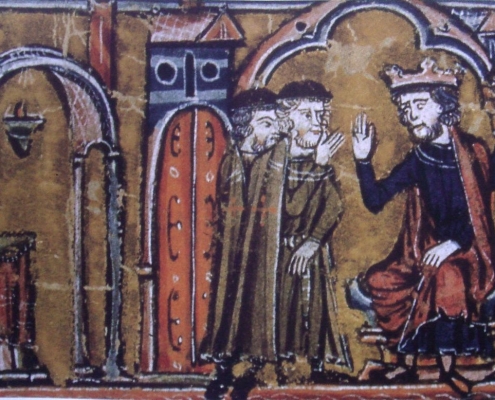 The Order of the Temple was founded in 1118 in Jerusalem, which had been liberated from the Saracens during the First Crusade in 1099.
The Order of the Temple was founded in 1118 in Jerusalem, which had been liberated from the Saracens during the First Crusade in 1099.
The successes of the crusaders had brought pilgrims from all over Christendom to the Holy Land, but the obstacles the pilgrims had to overcome were numerous. There was a lack of roads and means of transport, the routes were threatened by robbers and it was almost a fact of life that one was cheated by the innkeepers and traders one encountered. To provide some protection for these otherwise unguarded pilgrims, Hugues de Payens and seven other knights founded the Order of the Temple. The king of Jerusalem, Baudouin II, granted them a residence near the royal palace at the captured Al Aqsa mosque, on the site traditionally believed to be that of the Temple of Solomon, also called Temple Mount. The Knights came to be known as the "Knights of the Temple" and for the next ten years, in addition to their regular duties, they excavated the ruins of Solomon's Temple beneath their quarters. In 1867, a team of Royal Engineers, led by Lieutenant Charles Warren and funded by the Palestine Exploration Fund, discovered a series of tunnels under Jerusalem and the Temple Mount, some directly under the Templars' headquarters. Several small artefacts were found indicating that Templars had used some of the tunnels, although it is unclear exactly who dug them first. Some of the ruins Warren discovered date back centuries earlier.
Hugues de Payens toured several European countries between 1124-1128, he received official approvals from the Catholic Church at the Council of Troyes in France in 1124 and he visited his comrade Henri Saint Clair, first Earl of Roslin at his home in Roslin, Scotland around 1126-28, during this visit he was granted land by King David I of Scotland to build the first Templar Preceptory outside the Holy Land, at Balantrodoch near Edinburgh, now called Temple Midlothian. Around this time Hugues de Payens also founded a Preceptory in London, England. Hugues de Payens' visit to Scotland establishes Rosslyn's first connection with the Templars.
As for the excavation under the Temple Mount, no evidence has been recorded, but it seems that the Templars found something.
In 1139 (just 21 years after the founding of the order), Pope Innocent II issued a papal bull exempting the Order from obedience to local laws. This ruling meant that the Templars were free to cross all borders, did not have to pay taxes and were exempt from all authority except that of the Holy See itself. With its settlements and generous financial resources, the Order grew into the largest and richest organisation of its time. Templars often fought in the vanguard in important battles during the Crusades. The heavily armoured and experienced knights on their war horses were almost always the spearhead of the attack to break through the enemy's lines.
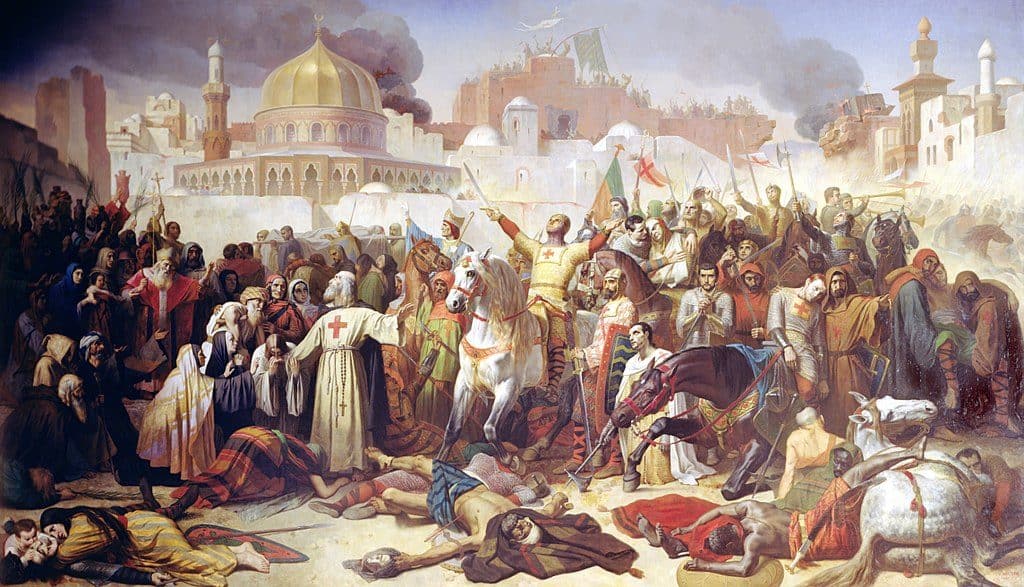 Although members were sworn to individual poverty, the Order gained control over wealth beyond direct donations. A nobleman on his way to the Crusades could place all his possessions under the control of the Order while he was away. By accumulating wealth in this way throughout Christendom, the Order began to generate letters of credit for pilgrims travelling to the Holy Land in 1150.
Although members were sworn to individual poverty, the Order gained control over wealth beyond direct donations. A nobleman on his way to the Crusades could place all his possessions under the control of the Order while he was away. By accumulating wealth in this way throughout Christendom, the Order began to generate letters of credit for pilgrims travelling to the Holy Land in 1150.
Pilgrims deposited their valuables with a local minister before leaving, received a document with the value of their deposit and then used that document on arrival in the Holy Land to collect their money. The bank cheque was born.
This innovative scheme was an early form of banking and was possibly the first formal system to support the use of cheques.
It improved the safety of pilgrims by making them less attractive to thieves and contributed significantly to the Order's coffers.
Based on this mix of donations and business transactions, the Order has established financial networks throughout Christendom.
- They acquired large tracts of land, both in Europe and the Middle East
- They bought and managed farms and vineyards
- They built churches and castles
- They were involved in production, import and export
- They had their own fleet of ships
- They owned the whole island of Cyprus for a year in 1191
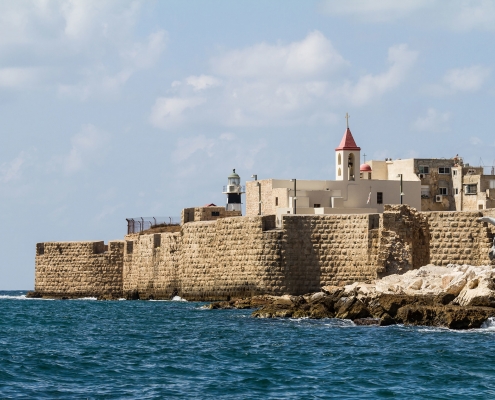 The story of the kingdom of Jerusalem is a sad tale of discord, and the glorious cause that brought the Crusaders to the East was often forgotten in dynastic strife and political intrigue. Under these circumstances it is remarkable that the final Saracen success was delayed for so long, but it was not until 1291 that the last stronghold of the Order, the city of Akko, fell. The remnants of the Order withdrew to Cyprus and the purpose for which the Order had been formed was now gone. A few years later, the king of France, Philip IV, was in urgent need of money, as he had taken on too many war loans. King Philip was known as Philip the Handsome, but he was anything but that. He orchestrated the installation of his own chosen man as the newly elected Pope Clement V in 1305. Now Philip the Handsome needed money and approached the Order, but was refused. He tried to get the Order to accept him as Grand Master under the pretext that he would then lead a new crusade to the Holy Land, but the knights did not choose to give up their freedom. King Philip then decided, with the reluctant but essential cooperation of Pope Clement V, to acquire the wealth of the Order for his own use.
The story of the kingdom of Jerusalem is a sad tale of discord, and the glorious cause that brought the Crusaders to the East was often forgotten in dynastic strife and political intrigue. Under these circumstances it is remarkable that the final Saracen success was delayed for so long, but it was not until 1291 that the last stronghold of the Order, the city of Akko, fell. The remnants of the Order withdrew to Cyprus and the purpose for which the Order had been formed was now gone. A few years later, the king of France, Philip IV, was in urgent need of money, as he had taken on too many war loans. King Philip was known as Philip the Handsome, but he was anything but that. He orchestrated the installation of his own chosen man as the newly elected Pope Clement V in 1305. Now Philip the Handsome needed money and approached the Order, but was refused. He tried to get the Order to accept him as Grand Master under the pretext that he would then lead a new crusade to the Holy Land, but the knights did not choose to give up their freedom. King Philip then decided, with the reluctant but essential cooperation of Pope Clement V, to acquire the wealth of the Order for his own use.
Jacques de Molay was burned at the stake.
In 1307 he suddenly arrested all Templars in France, and persuaded all countries except Scotland and Portugal to follow suit.
The wealth, independence, pride and secrecy of the Order proved to rob them of all influential friends, and the French king managed to secure their conviction for heresy. However, Phillip never succeeded in acquiring the wealth of the Order, as someone tipped off the knights and on the day of the mass arrests, the Templar fleet set sail from La Rochelle in France, their destination a mystery - although many at the time believed they were sailing to Scotland. In France, many Knights of the Order were tortured to force confessions, and in this way much of the scandalous legend was added to the Order's story. Many resisted the force of the rack and were burned at the stake as heretics. The Grand Master, Jacques de Molay, was the last to be put to death in Paris in 1314.
 His moving last words from the scaffold:
His moving last words from the scaffold:
"It is only right that at such a solemn moment and when my life has so little time to run, I should reveal the deception that has been practised and stand up for the truth. Hear me! Before heaven and earth and all of you before my witnesses, I confess. I confess that I am indeed guilty of the greatest shame, but the shame is that I have lied. I have lied by admitting the disgusting charges against my Order. I declare, and I must declare, that the Order is innocent. Its purity and holiness have never been defiled. In truth, I would have testified otherwise, but I did so for fear of terrible torture. Other knights who withdrew their confessions were led to the stake, I know. Yet the thought of dying is not so horrible that I would now keep my confession of gross crimes that were never committed. Life is offered to me, but at the price of faithlessness. At such a price, life is not worth living. If life can only be bought by piling up lie upon lie, I do not grieve to lose it."
Modern historians reject the trial of the Knights Templar as wholly unjust and acquit the Order of the charges against it. The Catholic Church has long held that the Order was innocent of any wrongdoing and a recently found document 'The Chinon Parchment' reveals that Pope Clement V had pardoned Jacques de Molay in 1314, just before his death. The surviving members of the Order merged with other orders or went into hiding. In Portugal King Denis refused the Pope's order and renamed the Order 'The Order of Christ' instead. This Order would continue in history into the 20th century and had a direct influence on European exploration and expansion for more than 400 years.
Rosslyn Chapel and the beginnings of Freemasonry.
Legends arose that some knights fled to Scotland, where an excommunicated King Robert the Bruce was engaged in a battle against the English and it seems logical and likely that the Bruce would have welcomed the Templars. The Templars fought for the Scots at Bannockburn in 1314 and in return received refuge, land and titles from a grateful king. Later this was called The Scotch Guard.
There is also a theory that the sailors of the Order managed to use their skills to navigate across the Atlantic Ocean where they discovered North America. In 1312, the Order of the Knights Templar was dissolved by the Council of Vienne and their remaining property was transferred to the Knights of St. John. In the 1440s (130 years after the Templars' dissolution) Sir William Saint Clair, Jarl of Orkney was the most powerful man in Scotland. He was a direct descendant of William de Saint Clair, the last Templar Grand Master of Scotland, who died with the heart of Robert the Bruce (as part of James Douglas, Lord of Douglas expedition) on a final crusade to Jerusalem.
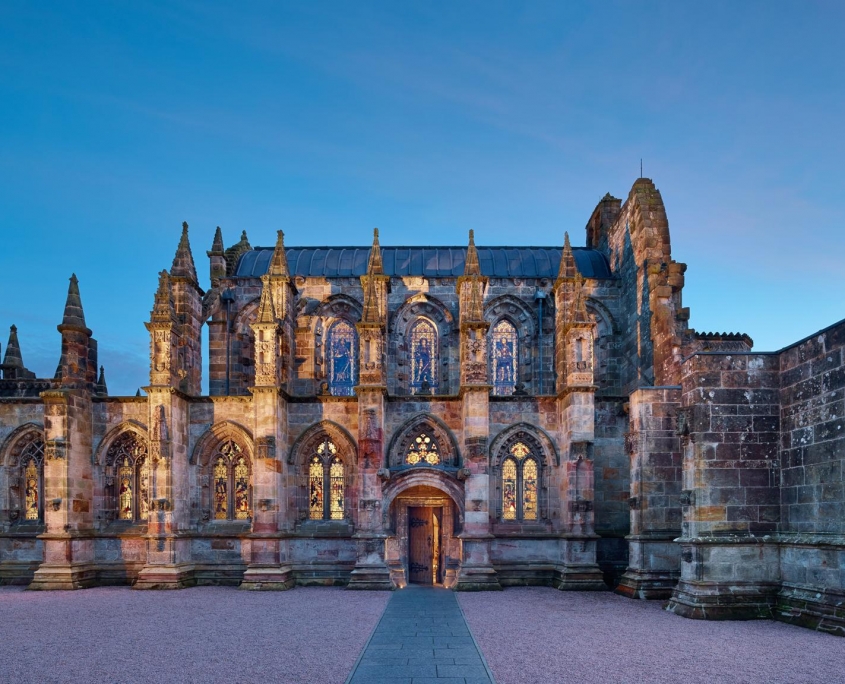 Sir William Saint Clair wanted to build a temple on his land in Rosslyn, near Edinburgh.
Sir William Saint Clair wanted to build a temple on his land in Rosslyn, near Edinburgh.
He sought and received a charter from the Church in Rome to build a collegiate chapel in 1446. His most likely reasons for wanting this temple would be to establish a seat of spiritual authority to emulate King James II and to house artefacts brought to Scotland by the Knights Templar in 1126 (and perhaps after the dissolution of the order) and inherited by the Saint Clair family.
Rosslyn Chapel connects the Jewish Temple to the Masonic Temple via the Knights Templar. Historians and researchers have now shown that Rosslyn Chapel was built in the same style as the Herodian architecture of Jerusalem and that it is an exact replica of the ground plan of the temple of Herod the King. The layout of Herod's temple was unknown to archaeologists until the mid-nineteenth century, almost four hundred years after the chapel was built. Sir William Saint Clair brought Masons (in those days the word mason meant builder and included stone, wood and metal masons) from all over Scotland to his chapel.
To accommodate them he built the town of Roslin near his castle and the site of the chapel, and on 20 September 1456 construction began. Rosslyn Chapel contains the oldest document showing a modern First Degree ceremony performed by a Templar. On the lower frame of the window in the south-west corner of the chapel is carving, carved between 1440 and 1450 of the First Degree. There are many Templar symbols and images of Templars carved in the chapel. When King James II died in 1460, his son, James III, came to the throne and he thought Sir William posed a great threat to the Crown of Scotland, so he stripped Sir William of Orkney (in 1470). Sir William abdicated as Earl of Caithness in favour of his son in 1476 and he died in 1484.
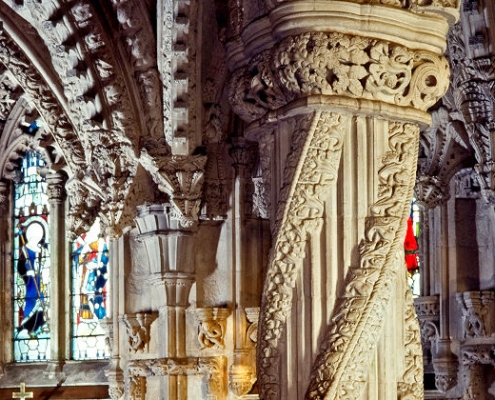 The Saint Clair, later Sinclair, family was also heavily involved in the establishment of Freemasonry in Killwinning on the other side of Scotland. A substantiation of how strongly the Saint Clair family was and is involved in the continuation of the Templar legacy into the 21st century.
The Saint Clair, later Sinclair, family was also heavily involved in the establishment of Freemasonry in Killwinning on the other side of Scotland. A substantiation of how strongly the Saint Clair family was and is involved in the continuation of the Templar legacy into the 21st century.
In 1483 (27 years after the construction of Rosslyn Chapel began) the first Masonic documents are found stating that the Burgh of Aberdeen is involved in the settlement of a dispute between six 'Masownys of the Lurge'.
Freemasonry begins to spread as Lodges initiate candidates and give them the 'Master's Word'.
It seems that the Freemasons who built Rosslyn Chapel found something of great value in the ceremonies and teachings they learned at Rosslyn and when they returned home, they took this ritual and sense of brotherhood with them.
Scotland would remain the cradle of Freemasonry for the next 100 years.
In conclusion...should we consider the roots of Freemasonry as coming from Megalithic times, King Solomon, Athelstan, the Templars, medieval stonemasons, Schaw, charities, the Invisible College or the Rosicrucians? Moreover, do we think that the roots of modern Freemasonry lie more in Scotland or England or perhaps France?
We will never know for sure and can only speculate about the gaps in history. Whatever course Freemasonry took, it inspired millions of people in many countries for more than three centuries and attracted famous personalities from Europe, the United States of America and other continents. If Freemasonry adapts to the Zeitgeist and manifests itself as a time-honoured Fraternity in which self-knowledge, respect and work on the Rough Stone are the primary goals, it will undoubtedly continue to do so for several centuries to come.
Thierry Stravers is co-owner of Masonic Store.
He likes to combine his passion for style and elegance with his Masonic activities.
Thierry is the owner of Trenicaa marketing agency and is a board member of Loge Enlightenment No.313 O: Hoofddorp.
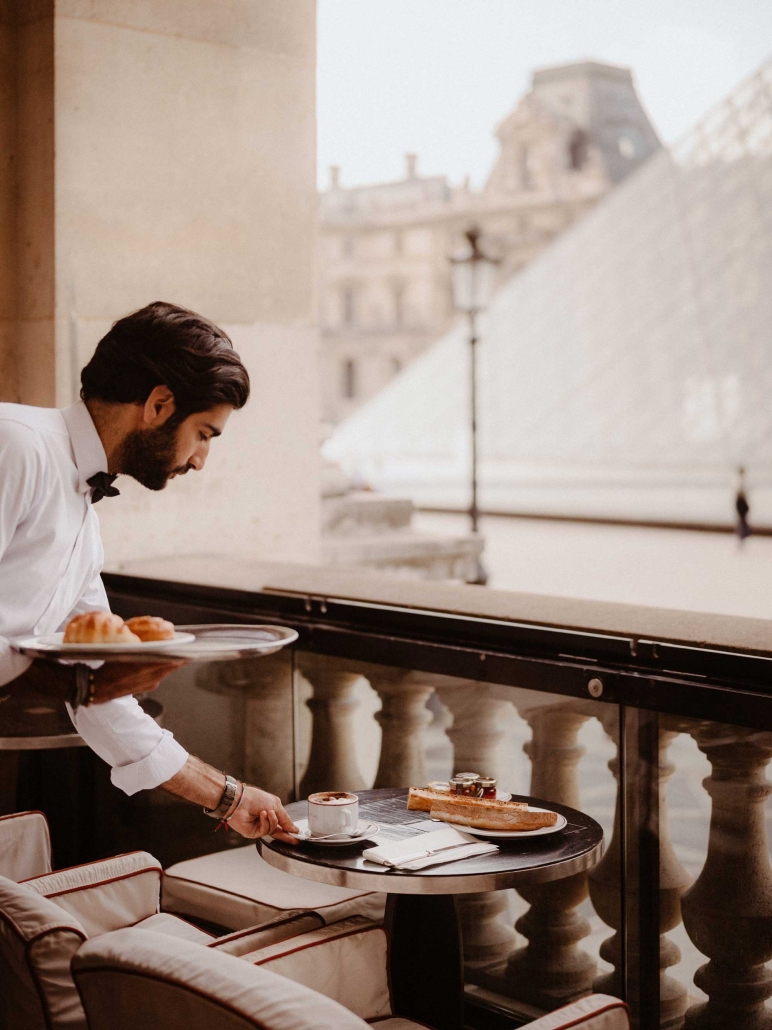 Coffee in the Louvre. The best vantage point to enjoy the view of the Louvre, to live the Louvre experience.
Coffee in the Louvre. The best vantage point to enjoy the view of the Louvre, to live the Louvre experience.
The name of Café Marly comes from Cour Marly in the Louvre, where French sculptures from the 17th century are on display.
Combining the grandeur of the royal past with the chic interior of today, Café Marly is simply unique.
With a refined ambience, exquisite continental cuisine and one of the most striking views in Paris, this superior restaurant offers a treat for all the senses.
Café Marly, founded in 1994, has one of the most enviable locations in Paris. Located under the arcades of the Richelieu wing of the Louvre, it overlooks this magnificent former royal residence and the famous inverted pyramid designed by Ieoh Ming Pei. The main courtyard of the Louvre and the glass pyramid are visible from the terrace and windows of this favourite haunt of impossibly chic Parisians.
The high columns, high vaulted ceilings and deep red and gold colours of the décor create an atmosphere of formality, but also a welcome change for those who have spent hours stumbling through the museum. The interior restaurant is two floors with a balcony terrace. The waiters dress in very thin black suits and a skimpy black tie, and numerous hostesses sit you down in outfits fit for a night out.
The best part of the museum can be seen through the windows in the restaurant, specially designed by Yves Taralon and Olivier Gagnère.
But Café Marly is also a sublime terrace under the arches that surround the Cour Napoleon, the best place in Paris to admire Ieoh Ming Pei's famous glass pyramid. Café Marly, one of the most beautiful secrets of the French capital. Located in the 1st arrondissement, always in fashion, certainly very Parisian, the Café Marly, this half-modern, half-Napoleon III era "brasserie" enjoys an exceptional view of the Louvre and its pyramids.
Models, journalists, fashion designers and others, in short "the jet set of Paris", come to this sophisticated restaurant and sit among the monumental wooden panelling for the view and to be watched, as well as to enjoy the Café Marly's cuisine, which is attractive and full of character without being pretentious.
The restaurant is owned by The Costes brothersGilbert and Thierry, whose establishments are synonymous with style and elegance. The interior design is by renowned designers Olivier Gagnère and Yves Taralon and offers a clean, contemporary feel with padded benches, gilded wood panelling and high ceilings that recall the Louvre's past as a royal residence.
Refined and traditional French cuisine is served from 8 a.m. to late at night, with breakfast, snacks, lunch, brunch and evening dinner presented with style and confidence. The food is attractive, with plenty of character, and yet it is not pretentious.
Celebrities and the jet set come here to dine, and you never know who you might run into. But even this is dwarfed by the extraordinary view. Sit on the terrace and watch the world go by in true Parisian style.
Beaumarly sounds like music to your ears, a promise of the unique moment to come, something very different... A wind of elegance blowing through the French capital, the Beaumarly style is hard to define, as it is embodied in the unique character of each space, whether café, brasserie, restaurant, club or hotel. The only way to describe it is to say that each Beaumarly space is definitely an icon. From Café Marly to Café Français, via Germain or Matignon, Gilbert and Thierry Costes have been constantly reinventing the art of the international brasserie for over 20 years, with a focus on aesthetic appeal, architects creating the most beautiful spaces, design and gastronomy. A certain take on avant-garde. Beaumarly is above all a lifestyle.
The Cafe Marly offers a daily breakfast from 08:00 to 12:00 and you can choose a fixed traditional French continental breakfast with a choice of a large coffee, cream, tea or hot chocolate, freshly squeezed orange or grapefruit juice and a choice of either viennoiseries or toasts with butter jam and honey, for €19.
Alternatively, you can opt for the à la carte breakfast, with the above items purchased separately, along with fresh fruit salad, a variety of omelettes or homemade granola and fromage blanc. Snacks are also available until 8pm, including various omelettes such as a ham or cheese, club sandwich, a croque-monsieur or croque-madame, a warm sandwich topped with a fried egg accompanied by Mesclun salad. You will find that the a la carte menu offers a wide range of different dishes, including salads such as lobster or whipped avocado and king crab, a traditional Caesar salad with chicken, chilled octopus and baby potato salad or a vegetarian quinoa salad for example, along with pasta dishes such as truffle ravioli from the famous Maison de la Truffelocated on the Place de la Madeleine, and these range in price from around €20 to €35.
A chic Parisian brasserie in a unique setting at the Musee du Louvre, the Petrossian Company uses fresh ingredients and most dishes are made in-house, although some specialities are prepared by reputable establishments outside, and you can enjoy a three-course menu of innovative plus traditional dishes. When it comes to appetisers or entrees, they may include gazpacho, Thai basilica-style chicken spring rolls, Galician sardines with Espelette chili butter, Tamara with truffles or Fois gras of duck, designed to be shared by two. You can also opt for Culatello, an Italian cured meat, something as simple as Japanese Edamame or Carrot Juice, or you can have Smoked Salmon or Caviar Alverta Royal, both from The Petrossian Companywhich range in price from around €10.
Please note that the regular cafe service is closed while serving breakfast, lunch and dinner. This means that you will not be able to sit down for a cup of coffee or a simple drink during meals.
You will be chased away in no uncertain terms. But apart from that small detail, there is nowhere else you can sit in a luxury café overlooking the glass pyramid of the Louvre
- Brasserie Café MarlyPalais du Louvre
93, rue de Rivoli, Paris 1er
Tel. 0033 (0)1 49 26 06 60
Metro Palais Royal - Musée du Louvre, lines 1 and 7
Thierry Stravers is co-owner of Masonic Store.
He likes to combine his passion for style and elegance with his Masonic activities.
Thierry is the owner of Trenicaa marketing agency and is a board member of Loge Enlightenment No.313 O: Hoofddorp.
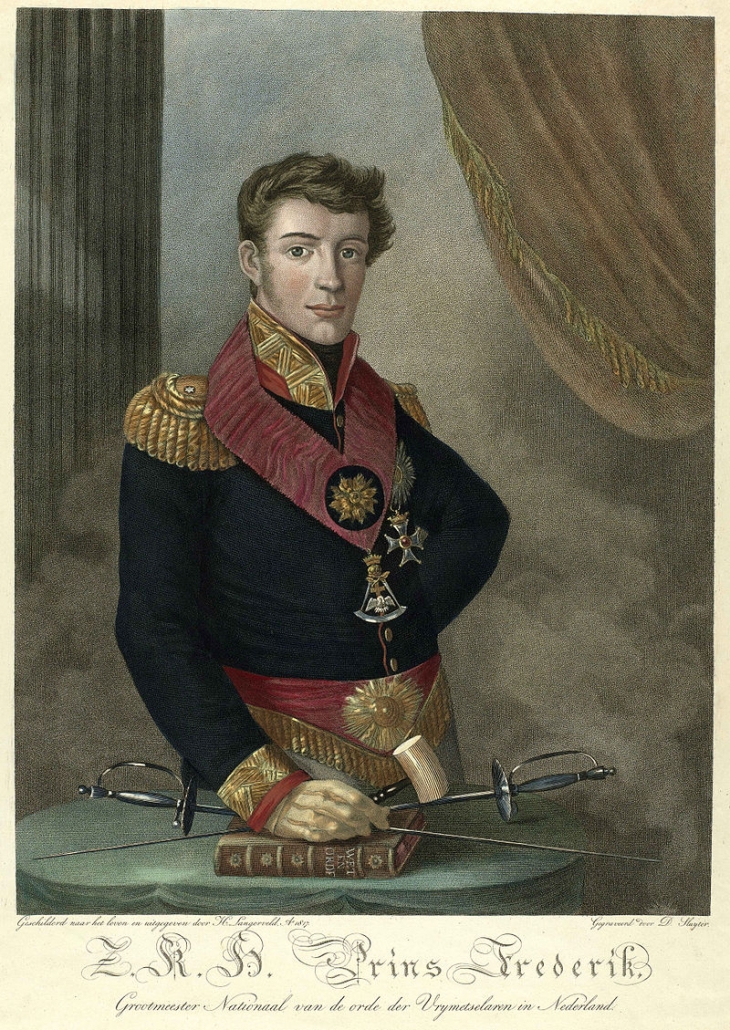 After the restoration of the stadtholdership in 1744, Freemasonry revived. In 1756, ten lodges joined together to form the 'Groote Loge der Zeven Vereenigde Nederlanden', which name was changed in 1817 to the name that still applies today: Orde van Vrijmetsaren onder het Grootoosten der Nederlanden'.Two princes of the House of Orange held the position of Grand Master of the Order of Freemasons in the 19th century: Prince Frederik (the younger brother of King William II, who was also a Freemason) for 65 years, from 1816 to 1881, and Prince Alexander (the younger son of King William III) from 1882 until his early death in 1884.
After the restoration of the stadtholdership in 1744, Freemasonry revived. In 1756, ten lodges joined together to form the 'Groote Loge der Zeven Vereenigde Nederlanden', which name was changed in 1817 to the name that still applies today: Orde van Vrijmetsaren onder het Grootoosten der Nederlanden'.Two princes of the House of Orange held the position of Grand Master of the Order of Freemasons in the 19th century: Prince Frederik (the younger brother of King William II, who was also a Freemason) for 65 years, from 1816 to 1881, and Prince Alexander (the younger son of King William III) from 1882 until his early death in 1884.
Frederik, Prince of the Netherlands, was born on 28 February 1797, the second son of Prince William Frederik, later King William I. Born and raised in Berlin, he was for some years an active officer in Prussian service, and in 1813 entered the Netherlands. He married Louisa Augusta Amelia, daughter of Frederick William III, King of Prussia. Frederick became commander of the army corps during the Belgian revolt in 1830 and in 1840 appointed Field Marshal of the army.
In 1816 he was accepted as a Freemason in a Berlin lodge of the German Grand Lodge "Zu den Drei Weltkugeln" and in the same year he was appointed as Grand Master National of the Grand East of the Netherlands and for the Chapter of the High Degrees. In 1819 he declared that he did not want to work in the High Degrees any more, because he detested the Christian character and thought that this would undermine the character of
Freemasonry as a sanctuary for all believers. In addition, this was partly in connection with the establishment of the Department of the Master Degree, which he had envisaged. In 1835, however, the prince was again elected Grand Master National for all Dutch obediences.
In 1856 he donated the The Order In 1856 he donated the building on the Fluwelen Burgwal in The Hague, which remained in use as an Order and Lodge building until 1993. In 1866, during the celebration of his 50th anniversary of Freemasonry, Frederick donated the famous library of Georg Kloss, which he had purchased, to the Order and took the initiative to found the Louisa Foundation.
In his time he was a highly respected and beloved member of the House of Orange. From the moment his father King William I was proclaimed sovereign of the Netherlands in 1813 until his death in 1881, he played an important role as advisor to Kings William I (his father), William II (his brother) and William III (his nephew). He was also very active in society. For instance, the Prince was for 65 years Grand Master of the Order of Freemasons of the Metropolitan Netherlands.
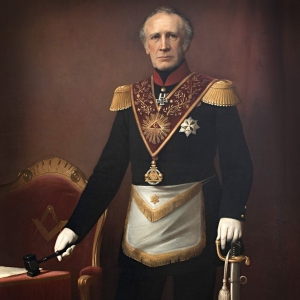 Prince Frederick was born in Berlin in 1797, the son of hereditary Prince William Frederick (later King William I) and Princess Wilhelmina.
Prince Frederick was born in Berlin in 1797, the son of hereditary Prince William Frederick (later King William I) and Princess Wilhelmina.
The reason he was not born in the Netherlands but in Berlin was that his family, led by his grandfather Stadtholder William V, had had to flee the country two years earlier because of the French invasion. At that time, the chance that the Oranges would ever return to the Netherlands as a stadholder family seemed very small. Prince Frederik therefore grew up mainly in Prussia and other German principalities and received a corresponding (partly military) Prussian upbringing. It was only after Napoleon's failed campaign in Russia that the tide began to turn in the European balance of power and there was some prospect of a return to the long-lost fatherland.
In 1813, Willem Frederik was proclaimed Sovereign Prince of the Netherlands after he landed on the coast of Scheveningen on 30 November of that year. Square 1813 in Willemspark and the monument to independence unveiled by Prince Frederik in 1869 in the middle of the square are reminders of this event.
Prince Frederik first set foot on Dutch soil in December 1813 and shortly afterwards began studying at Leiden University. From 1815, when William I had become King of the United Kingdom of the Netherlands, the Prince took up public functions: in 1815 he became a member of the Council of State, in 1816 Grand Master of the Order of Freemasons and in 1817 Grand Master of Artillery. The reason that Prince Frederik became Grand Master of the Freemasons was political: there was some fear that the Freemasons would want to block the policy of unification of the Northern and Southern Netherlands. This was especially true for the southern Lodges where there were many opponents of the United Kingdom and Bonapartists and who were still connected to the French Grand-East. Therefore, royal supervision was considered necessary. For Freemasonry, this had the advantage of a direct link to the royal family. With this aim in mind, a court lodge called L'Union Frédérique was founded in 1816, which in many respects can be seen as a forerunner of L'Union Frédéric, founded in 1914.
Although his entrance into Freemasonry had a political background, the prince took his task as Grand Master seriously.
Frederik soon felt at home in the brotherhood and soon began to involve himself in all kinds of organisational aspects of Freemasonry.
An important Masonic legacy of the prince concerns the still existing Divisions of the Master Degree, which was to form an alternative to the higher degrees.
For Prince Frederik personally, Freemasonry was a school of learning in many respects: in addition to the "usual" Masonic education, he learned how to manage an unruly organisation with very diverse people and visions. Above all, Freemasonry brought him into contact with many people (ordinary citizens) whom he would otherwise never have met.
A second important legacy of the prince concerns his gift of the Order building on the Fluwelen Burgwal. In 1847 he donated this building to the Order and until the beginning of the nineties of the 20th century the executive committee and the lodges in The Hague were housed here. Condition for this gift was that the three existing lodges in The Hague Loge L'Union RoyaleEendragt maakt Magt and L'Union Fréderique would merge into one Lodge. In 1847, he offered the Hague Masonic Lodges L'Union Royale (founded 1757), Eendragt maakt Magt(1795) and L' Union Frédéric (1816) the "use and exploitation" of the building. A temple was built in the garden. In 1856, Prince Frederik donated the lodge building to the Masonic Order on the occasion of its 100th anniversary.
In 1825 Prince Frederick married the Prussian Princess Louise, who was also his niece (at this time, marriages between nephews and nieces were especially common in royal and noble families, as this was seen as an excellent way to establish and confirm political alliances). From this marriage two daughters and two sons were born. The eldest daughter Louise married King Charles XV of Sweden and Norway and thus became Queen of these countries. The present kings of Belgium and Norway and the Queen of Denmark descend from her and thus from Prince Frederick in a direct line. The Prince's two sons both died in childhood. During the winter, the Prince's family lived in a city palace on Korte Voorhout, which stood where the Ministry of Finance now stands and was destroyed in the bombing of Bezuidenhout in 1945. In the summer they lived in Huize de Pauw, the present town hall of Wassenaar.
Furthermore, the Prince owned considerable pieces of land in and around The Hague and he owned land in present-day Germany and Poland.
Unlike his brother King Willem II, he managed his capital skilfully and he died in 1881 as a very wealthy man.
The prince died on 08 September 1881 after a Grand Mastery of more than 65 years.
Thierry Stravers is co-owner of Masonic Store.
He likes to combine his passion for style and elegance with his Masonic activities.
Thierry is the owner of Trenicaa marketing agency and is a board member of Loge Enlightenment No.313 O: Hoofddorp.
5 May marks the 200th anniversary of the death of Napoleon Bonaparte. He is still the most famous ruler France has ever had. Despite his contradictory nature, he is undoubtedly one of the most important personalities in history. Many generations of French people have been filled with admiration, pride and unremitting interest in studying the life of the "little corporal" who became emperor.
Napoleon Bonaparte was born in 1769 on the island of Corsica. He became a successful and popular military leader and came to power in France in 1799. This was not enough for the ambitious Napoleon: he later crowned himself emperor.
With his armies, he conquered large parts of Europe in those years. However, the campaign in Russia in 1812 ended in defeat. Napoleon was exiled to Elba. But he escaped and within 100 days he was back in power in France. In 1815 he was finally defeated at Waterloo.
The English bring him to the remote island of Saint Helena, where he finally dies in 1821, at the age of 51.
Was Napoleon a Freemason?
Historians have no document that could confirm this, but there are some undeniable facts that show Napoleon's strong affiliation with Freemasonry. It was thanks to Napoleon that Freemasonry spread in Europe. He changed Freemasonry from a secret society, as it was until then, to almost an official state religion and united all French Lodges in the Grand Orient de France. On his native island of Corsica, Bonaparte grew up surrounded by Freemasons. His father and all three of his brothers were Freemasons, so there was undoubtedly a lot of talk about Freemasonry.
- The youngest brother, Jerome Bonaparte (1784-1860) was initiated into Freemasonry at the age of 17 in the Mir Lodge in the east of Toulon.
His Masonic career developed rapidly. A year later, in 1801, he became Grand Master of the Grand Lodge of Westphalia, and in 1807 Napoleon made him King. - The elder brother, Joseph Bonaparte (1768-1844), was initiated into the Loge La Parfaite Sincérité (The Perfect Sincerity) in the east of Marseille. In 1804 he became Grand Master of the Grand Orient de France and King of Naples, then King of Spain.
- Finally, Louis Bonaparte (1778-1846), father of the future Napoleon III, served as Deputy Grand Master from 1803 to 1806, before being succeeded by Jean-Jacques Regis Cambasseres.
- Napoleon's wife, Empress Josephine de Beauharnais (1763-1814), was initiated into a women's lodge in Strasbourg and held the position of Grand Master for some time.
- Eugène de Beauharnais, Josephine's only son from her first marriage, at the age of 24, who had been given the title of Viceroy of Italy by her stepfather, became the founder of the Grand Orient of Italy and the High Council of Italy.
The support of Freemasonry in Europe by Napoleon, caused an unprecedented stir. Many soldiers, politicians, nobility and citizens wanted to become members of Freemasonry. Twenty-two of Napoleon's thirty Marshals, five of the six members of the Imperial Military Council and six of the nine government ministers were Freemasons. The reign of Bonaparte can be called the golden age of Freemasonry. In the 18 years that he was in power, the number of Masonic lodges in France increased from 300 to 1220, of which a large part were military lodges. Napoleon saw in Freemasonry a powerful tool to unite the army, which was very useful for his European ambitions.
During his military operations in Europe, the International Brotherhood was an ideal instrument. Freemasonry, however, responded to the Emperor with reciprocity. Busts of the emperor were installed in many Masonic temples and any criticism of his rule was considered provocation.
In 1801, the Loge Bonaparte was founded in Paris with the main task of glorifying the emperor's name. The lodge successfully survived exile and Napoleon's death and was not closed until 1871. It withstood the reactionary years thanks to the fact that it was carefully renamed Moderation Lodge.
It was the military officers, subordinates of Bonaparte, who took part in the Egyptian expedition that brought Freemasonry to the banks of the Nile. General Kleber founded Loge Isis in Cairo, also founded by Napoleon.
But the question remains. Although Napoleon made Freemasonry a part of his government policy, was he an active Mason?
If he wanted to become a member, he would immediately receive the highest and most honourable title in the Order.
If we know the character of Napoleon, the answer to this question is quite clear: it was not enough that he was "first among equals", he had to be "above" equality. The Bonaparte family came from an old Florentine aristocratic family. Napoleon had every right to add the title of Count to his family name, but he never took advantage of this opportunity.
But neither did he want to be called a friar.
For the same reason Napoleon once renounced the title of Marshal - it was enough for him that he was "de facto" commander-in-chief of the French army. Ranks and titles were in no way attractive to him. Napoleon was only interested in absolute power.
After he was crowned Emperor of France, Napoleon got his ambition.
He called the imperial throne, "a piece of wood" and sitting at the dinner table with the nobility of Europe, he would sometimes remark,
"When I had the honor of being a junior lieutenant..." .
L'empereur had a nose for propaganda. When it was necessary to demonstrate the wealth and power of his empire, he was not stingy. His palaces were richly decorated with gold and the court was the most refined in Europe.
After he became Emperor, Napoleon remained closely involved in Masonic affairs.
At the execution site of King Louis XVI, he ordered an obelisk to be erected with a Masonic symbol, a five-pointed star. A bee, a Masonic symbol, was used in the creation of his personal imperial coat of arms. The bee is a very old symbol. In ancient Egypt, it accompanied the goddess Isis and had many meanings. For Napoleon, the bee meant a willingness to sacrifice for the country and the ability to rebirth.
Shortly after Napoleon came to power, on 22 June 1799, a nine-article memorandum was signed between the two largest French Grand Lodges, laying down specific
rules. In particular, the Honorable Master was stripped of his exclusive privileges. A system for the election of officials was made compulsory for all lodges. Only a few Lodges in the Scottish Rite refused to join the Memorandum.
Thus, the fragmented French Freemasonry became a unified and homogeneous system, fully supported by Napoleon. Soon the 'Regulator of Freemasonry' was published - a set of rules and rituals for the lodges of Le Grand Orient de France.
The Lodges under the Scottish Rite also made appropriate changes to their rules, but this took three years. As a result, the rituals were still not identical, but there was one Supreme Council of the 33rd degree. The decisions of this council were binding. The Emperor could influence every decision, as the High Council was meanwhile headed by his elder brother Joseph, who had become the Grand Master.
The 'Regulator of Freemasonry', which unified the activities of Freemasons, became a document that organically continued the reforms of Napoleon, along with the Constitution, the Civil Code, the system of universal education, a single award system of the state (the Order of the Legion of Honour), etc.
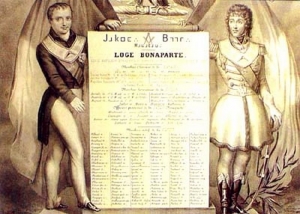
An engraving with a list of members of Loge Bonaparte. On the left is Bonaparte and on the right is Jean-Baptiste Willermose (1730-1824), who designed a system of High Degrees for Freemasonry in France and Germany.
Following France, the Freemasons of other European countries began to combine their rituals into one system. Marshal of the realm, Freemason Jean-Baptiste Jules Bernadotte, who became crown prince of Sweden, reformed the Swedish rite. The system of 12 Masonic degrees still exists.
Friedrich Ludwig Schröder, Grand Master of the Provincial Grand Lodge of Hamburg, inspired by the ancient rites of the Knights Templar, developed his Rite, limited to three symbolic degrees. Today it is practised in some lodges in Germany, Hungary, Austria and Switzerland.
In Spain, the Grand Master Count François Joseph Paul de Grass also established a Masonic hierarchy under the leadership of the Supreme Council.
In 1806, to celebrate his triumph at Austerlitz, Napoleon decided to build the Arc de Triomphe. A team of builders and architects, composed entirely of Freemasons, was set up to carry out the project. Brother Jean-Baptiste Nomper de Champagny proposed the concept and chose the building site. The original plan was designed by the architect Charles-Louis Balzac (Loge Le Grand Sphinx, Paris) and the architect Jean-Francois Chalgren (Loge L'etoile Polaire, Paris).
Freemasons created the relief on the arch. The sculptors François Rueud (north side, composition "Marseillaise") and Jean-Pierre Corto (south side, composition "Le monde viennoise"). The official government architect, Maison Pierre Fontaine, supervised the construction.
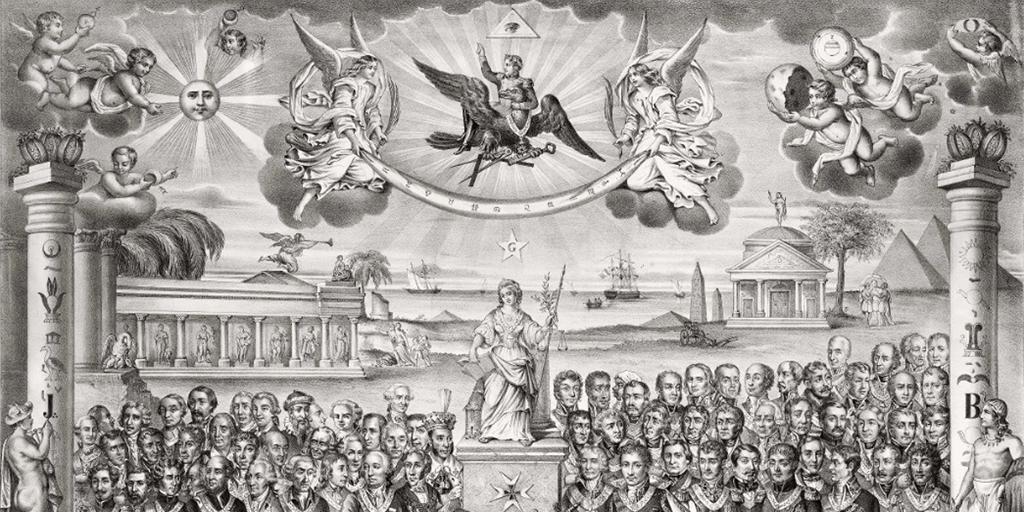
On the engraving from 1860, under the shadow of the emperor above whom The Eye of the Providence shines, are 61 historical figures from his time. On the left are Désé, Cambassaire, Kleber and the commanders Davaux, Lannes, Murat, Lasalle, Mathieu Dumas, among others. On the right: Washington, Frederick the Great, Alessandro Volta, Diderot, Lased, Lafayette, Parmatier, Helvetia.
Following the military leaders, Napoleonic Freemasonry was enthusiastically received by the most prominent figures of science and culture in France:
- Pierre Simon de Laplace - mathematician, physicist and astronomer, one of the creators of probability and differential equations,
- Charles Louis Cadet de Gassicourt - chemist, pharmacist and writer, founder of one of the first scientific journals, Le Bulletin Pharmalogique,
- Artist Pierre Prudon (Loge Charity, Bonn),
- Artist Francois Gérard (Loge Le Grand Sphinx, Paris),
- Portrait painter Jean-Baptiste Isabé (Loge Saint Napoleon, Paris),
- Actor Francois-Joseph Talma, reformer of theatrical art (Loge Union, Paris),
- Academician Pierre Jean Georges Cabanie, physiologist and philosopher (Loge Les Neuf Sœurs, Paris),
- Academician Joseph Lacanal, professor of philosophy, member of the monastery, organiser of the education system in France (Loge Le Point Idéal, Paris),
- writer, publicist and politician Henri-Benjamin Constant, the most important representatives of French Romanticism in literature,
- sculptor Claude Claudion (Les Amis Fidèles, Paris),
- Alexander Bognard, professor of natural sciences, chemist, pharmacist, geologist, zoologist, botanist and palaeontologist (Loge Saint-Jean-du-Contrat, Paris),
- architect Pierre Fontaine,
- composer André Gretry, creator of the French comic opera,
- Composer Luigi Cherubini, creator of the genre "opera salvage" (Loge Saint Jean de Palestine, Paris).
The legacy of Napoleon.
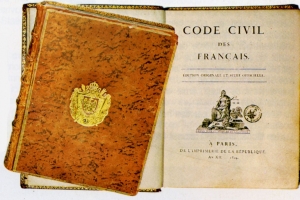 Perhaps the most famous legacy of Napoleon. He introduced the civil registry in the areas where he had power, in the Netherlands in 1811. Births, marriages, everything had to be registered from then on. Family names were already being used, but this ensured that your ancestors adopted their definitive family name. Useful for when you are doing genealogical research. But Napoleon simply wanted a good overview, so that he could levy taxes more easily.
Perhaps the most famous legacy of Napoleon. He introduced the civil registry in the areas where he had power, in the Netherlands in 1811. Births, marriages, everything had to be registered from then on. Family names were already being used, but this ensured that your ancestors adopted their definitive family name. Useful for when you are doing genealogical research. But Napoleon simply wanted a good overview, so that he could levy taxes more easily.
When you get into your car now, you drive on the right side of the road. Thanks to Napoleon. In earlier times, knights on horseback rode on the left, so that they could more easily wield their sword or lance with their right hand. The rich French bourgeoisie stuck to the left. The common people usually walked on the right. But since the French Revolution in 1789, everyone was officially equal. Therefore, Napoleon decreed that right-handedness became the norm. It was also more convenient with the carriages and carts in those days. Countries which he did not conquer, such as Great Britain, continued to drive on the left.
Thanks to the French, we also have street names with even and odd house numbers. This system was first used in Paris, and later in all conquered regions. We also owe paved roads to Napoleon, who wanted straight lines between cities. Handy for moving his troops, of course. In France, these roads were called the Route Nationale; in Europe they are called Napoleon roads. The Amsterdamsestraatweg in Utrecht is an example of this. It was built by order of Napoleon in 1812, as part of the Route Impériale between Paris and Amsterdam.
A kilo of potatoes, a litre of milk, and, let's say, a metre of beer. Standard measures and measurements. Napoleon introduced the metric system in 1799. Before that, all kinds of different measures were used in Europe, such as inches, ells and feet. Napoleon found this inconvenient and confusing in his empire. And even if you don't realise it, you probably have to deal with it every day.
According to Napoleon himself, his most important legacy: the Code Napoleon, or the Code Civil. The French Civil Code, which laid down the principles of 'liberty, equality and fraternity', but also the separation of church and state, served as inspiration for law books in many countries. Napoleon eventually made his code compulsory in the Netherlands as well. By the way, equal rights did not apply to women in those Napoleonic days.
Abattoir, desk, purse, all words that came into vogue during the French era here in the Netherlands. From 1810 to 1813, French was even an official language here, alongside Dutch. It was also compulsory in education. Napoleon also carried out reforms there. Teachers became obliged to teach in class. Parents had to pay school fees. And he introduced the final exam.
Napoleon appointed his brother Louis king of the Netherlands in 1806, in order to retain as much influence as possible. This makes the Netherlands a kingdom for the first time. It forms the basis for the later monarchy. Iek ben konijn van Olland', said the French Louis when he took office, as he had difficulty with the Dutch pronunciation.
Brother Louis Napoleon took up residence in the Town Hall on Dam Square, which has since become known as the Palace on Dam Square. He made Amsterdam the capital, and founded institutions that we still know today, such as the Rijksmuseum, the Royal Library and the Royal Netherlands Academy of Arts and Sciences (KNAW).
Another striking structure that we owe to the Napoleons: the Pyramid of Austerlitz, near Woudenberg in Utrecht. A 17 metre high homage to Napoleon, constructed by French troops who were stationed there for a few months in 1804. The name Pyramid of Austerlitz was actually invented by Louis Napoleon. It is the place in the Czech Republic where his imperial brother defeated Russian and Austrian armies in a legendary battle.
Although not his invention, Napoleon did provide the impetus. In 1800, he offered a cash prize to anyone who could think of a way to keep food fresh for longer. After all, he needed this for his soldiers during their campaigns. French cook Nicolas Appert discovered pickling. By boiling vegetables in sealed bottles to kill the bacteria, they stayed good longer. Glass was too fragile for soldiers, so the canning jar was invented.
After the battle of Waterloo, where Napoleon lost his power and began his exile on the island of Elba, the golden age of the French Lodges came to an end. The restoration of the Bourbons as rulers and the persecution of the Bonapartists made activities of most Masonic Lodges downright dangerous.
But even the dissolved Lodges were not closed. According to Masonic tradition, they were only declared as "sleeping Lodges". After the deposition of Louis Napoleon III and the proclamation of the Third Republic in 1870, French Freemasonry experienced its second golden age, thanks to the Napoleonic era.
Thierry Stravers is co-owner of Masonic Store.
He likes to combine his passion for style and elegance with his Masonic activities.
Thierry is the owner of Trenicaa marketing agency and is a board member of Loge Enlightenment No.313 O: Hoofddorp.
Service
Departments
- AASR Schotse Ritus
- Craft Degrees
- Cryptic
- Gentlemen
- High Degrees (Dutch)
- Knights Templar
- Knights Templar Priests
- Knights of Malta
- Le Droit Humain
- Mark Master Mason
- Order of the Secret Monitor
- Order of the Eastern Star
- Red Cross of Constantine
- Royal and Select Master
- Royal Arch
- Royal Ark Mariner
- Royal Order of Scotland
- Shriners
- The Widows Sons
Information
Search
![]()

